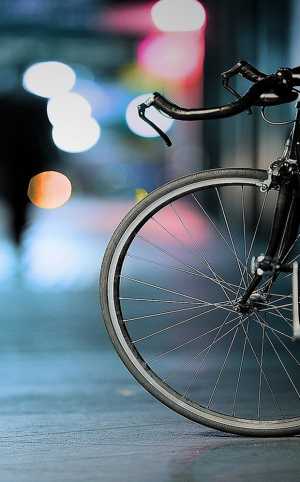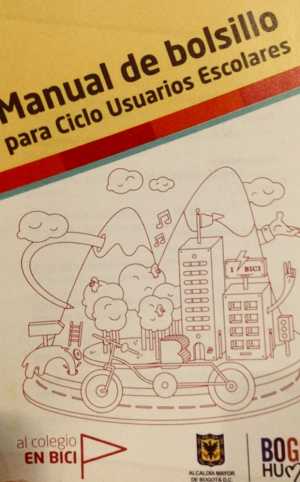There is no end to what can be said about Bogotá, the capital of Colombia: hundreds of facts, thousands of statistics, and countless stories. The list is endless. However, one thing is certain – Bogotá is a city of bike paths.
A Glimpse into Bogotá
To begin with, Bogotá is far from a small city – on the contrary, it’s a true giant. It is divided into 20 districts, which contain over 1,900 urban neighborhoods.
The city spans 33 kilometers from south to north and 16 kilometers from east to west. Its population is around 7.15 million, not counting the so-called “floating population” – people without a fixed residence or tourists.
Importantly, Bogotá is the political, economic, administrative, industrial, artistic, cultural, sports, and tourist hub of Colombia.

Therefore, mobility becomes a crucial issue. Anyone who grew up in this city knows that traffic is a constant challenge. The streets are often jammed, traffic congestion is endless, and planning your day carefully is essential. Visiting several places in a single day is nearly impossible – distances in Bogotá are a real obstacle.
Where People Cycle the Most
A study by the Faculty of Engineering at Universidad Libre shows that the Suba district records the highest number of bike trips – more than 73,000 per year. Next come Engativá with 64,500 and Bosa with 62,000 rides annually.

Nonetheless, the city has undergone significant change – a transformation that began decades ago. Bogotá introduced dedicated bike paths, known as Ciclorrutas. These urban bike lanes are exclusive to cyclists.
Today, the network spans 440 kilometers across 30 routes, with five routes longer than 20 kilometers. The longest one is the North-Quito-South corridor, measuring 26.5 kilometers. Moreover, many routes are interconnected, making it easier for cyclists to navigate the city.
Significantly, these routes were planned with Bogotá’s morphology and topography in mind. While the city is relatively flat from north to south, there are steep slopes from east to west.
Bogotá’s bike network includes three types of paths:
Main network – connects the city’s major hubs directly.
Secondary network – links neighborhoods and key points to the main network.
Complementary network – closes gaps and ensures continuity.
Not All Is Perfect
Despite this impressive infrastructure, challenges remain. Like other parts of the city, the bike paths and cyclists are increasingly affected by crime, especially in the districts of Usaquén, Suba, Kennedy, Tunjuelito, and Ciudad Bolívar, where bike theft is common.
Even though Bogotá has one of the largest cycling infrastructures in Latin America, many cyclists still prefer to ride on regular roads, which is both dangerous and risky. But why?
According to many riders, the Ciclorrutas are problematic: poor lighting, potholes, open manholes, and la lack of safety make them unappealing. As a result, several apps have been developed to report dangerous areas, and their data often matches official reports.

Another serious issue is the shortage of secure bike parking. There simply aren’t enough spaces. And the few that exist are often unsafe.
Here are a few safer bike parking locations in Bogotá:
Bavaria: 99 spots on the company’s premises
Centro Comercial Santa Fe: 600 free parking spots in Mirandela (Suba) with good signage and security
Fundación Santa Fe: 50 public-access spots
Parking International – La Enseñanza: Located in Chapinero (Calle 72 with Carrera 8), 40 spaces with three access zones
Universidad de Los Andes: 440 spots for students – more than for cars
Unfortunately, accidents are another major concern. In 2017, the Mobility Secretariat reported 59 cyclist fatalities. In 2018, the number rose to 63.
Forward-Thinking Solutions
Fortunately, there are also encouraging developments. Due to a shortage of school buses, Bogotá launched the “Al colegio en bici” (To School by Bike) program – an initiative by the education and transport authorities to promote sustainable mobility. Over one million trips have already been made.

Therefore, Bogotá is now a pioneer in sustainable school transportation and large-scale bicycle use. This project must be expanded – it is safe, healthy, and empowers children to navigate their city.
Another innovative solution comes from Universidad Nacional: a newly designed vehicle similar to a bike taxi, carrying up to six children with seatbelts, helmets, brake lights, and luggage compartments.
What the Citizens Say
Mobility remains one of the top concerns for Bogotá’s residents. In fact, 61% say their commuting time has increased. Experts agree: traffic safety, motorbike regulations, sustainability, and the quality of public transport are key. Notably, 2018 was the worst year for Bogotá’s traffic to date.
Bogotá is a complex, challenging, fascinating, beloved – and at times frustrating – city. But one thing is undeniable: riding through Bogotá on two wheels is a real joy.


